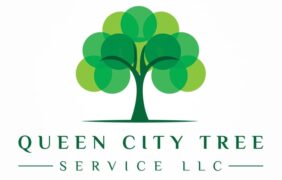Now is the time to properly prune crape myrtles in this region, there is never a good time for topping a crape myrtle.
Crape Myrtles Are Sought After
Crape myrtles come in beautiful colors … white, pinks, purples and are showstoppers when in full bloom. They have a long blooming season, starting in May into late summer. They are beautifully shaped and come in a plethora of color shades. Over the years they can grow beyond their intended space with low lying limbs stretching across roads or sidewalks. If this happens, it might be time for pruning. A rule of thumb is to prune crape myrtles late winter, making February a great time in the Charlotte and surrounding areas to prune. Pruning should be done before new growth pops out, typically in March to early April. Crape myrtles bloom on new growth and you don’t want to miss out on its yearly performance.
The Natural Shape of a Crape Myrtle vs. Topping

The mature shape of a crape myrtle varies greatly depending on the species of tree you have, if you have a hybrid or an heirloom variety. Typically, they are vase shaped with some being more upright while others have gentle rounded spreads. Multiple trunks are indicative to the species and provide interest when not in bloom. The trunk bark sheds in patches revealing salmon and cinnamon colors divulging intricate patterns. Crape myrtles bloom on new growth making winter the best time for pruning and shaping. Many people do not prune but “Top” their myrtle tree which is the incorrect form of pruning. Topping is frowned upon in the tree care industry, for a variety of reasons. Topping, is also known as heading or stubbing, and is the drastic removal of the tree canopy using improper cuts. Picture in your mind the flat top haircuts men get, except for your tree. To top a tree in this manner, uses improper cuts ruining the natural shape of the tree along with its health. We are properly trained in pruning techniques that never compromise your trees beautiful shape and form.
Reasons Why You Should Not Top Your Crape Myrtle

- Studies show that severely topping crape myrtles cause up to six times more dead wood than a properly pruned tree. Those trees require more annual maintenance.
- Topping creates unnecessary stress for the tree by removing the majority of the crown, placing the plant in survival mode.
- Topping dangerously removes your crape myrtles food reserves. Food is stored in those woody steams that are removed during the incorrect pruning process. This is the time reach out to our certified arborist for your pruning needs.
- Topping disables the tree from producing it’s on food through photosynthesis due to loss of 50%-100% of the foliage.
- Topping puts your tree at risk to insects or wood-decay fungi. The branch stubs left behind are open sores providing entry points that can weaken your tree.
- The obvious reason, topping gravely disfigures the natural shape of your tree. Many people term topping as Crape Murder, because the lovely vase or rounded shape can never be regained as nature intended.
Other Methods Than Topping
Plant crape myrtles where they have the space needed to reach mature size without impediments and the need for pruning. If this option is not possible, because of an inherited landscape, there is a pruning technique to opt for, called pollarding. This recommended pruning technique allows you to control the crown of the tree while keeping its mature shape. This tree maintenance technique is performed over a multi-year process allowing you to keep your tree the same height from year to year avoiding dangers such as overhead powerlines. Pollarding should be performed by certified tree experts to remove significant amounts of foliage by pruning back large-diameter branches with proper cut points. Sprouts that regrow are removed yearly leaving several key sprouts to flourish. In future years, only small cut backs to the pollard head would be needed. The smaller cuts heal faster with reduced chances for insects or disease issues.



